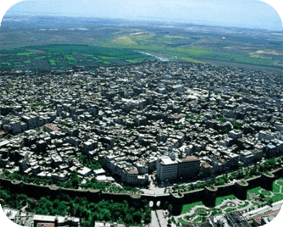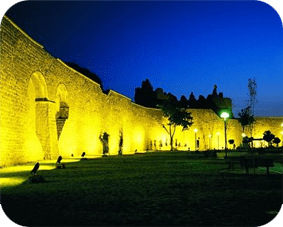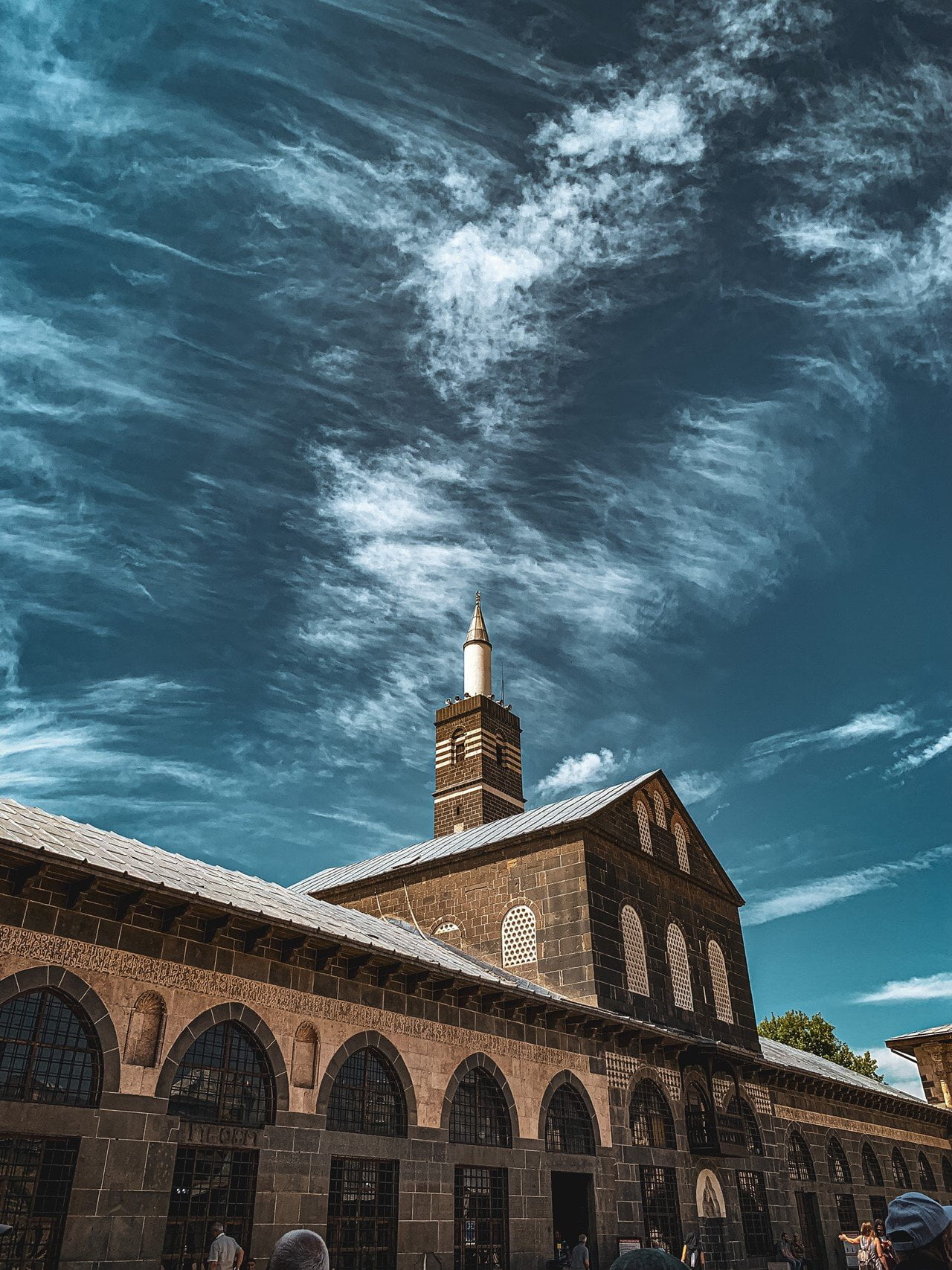DIYARBAKIR
Diyarbakir, known in ancient times as Amida, spreads across a basalt plateau close to the banks of the Dicle River. The black basalt triple walls that encircle the old town give the city a rather ominous appearance. These ramparts, 5.5km in length, with 16 keeps and five gates, inscriptions and bas-reliefs, represent a superb example of medieval military architecture. The Ulu Mosque, built by the Seljuk sultan Melik Shah, is notable for its original plan, and for its utilization of Byzantine and more ancient architectural material. The mihrab of the nearby Mesudiye Medrese is made of the local black basalt. The Nebii Mosque represents the typical Ottoman mosque style, while the Safa Mosque exhibits Persian influences in its tiled minaret. The third century Aramaic Church of the Virgin Mary (Meryemana Kiiisesi), which is still in use today, makes an interesting visit. For an example of early domestic architecture, stop at the restored home of the writer Cahit Sitki Taranci. The Deliller Hani (1527) by the Mardin Gates, converted and refurbished into a hotel, recreates the atmosphere of the days when trading caravans stopped in Diyarbakir. Just outside the city walls, by the river, stands Atatürk’s house, now a museum. South of town at the Dicle Bridge, built in 1065, you can take a great photograph of the Dicle River, the bridge and the city walls.




0 Comment